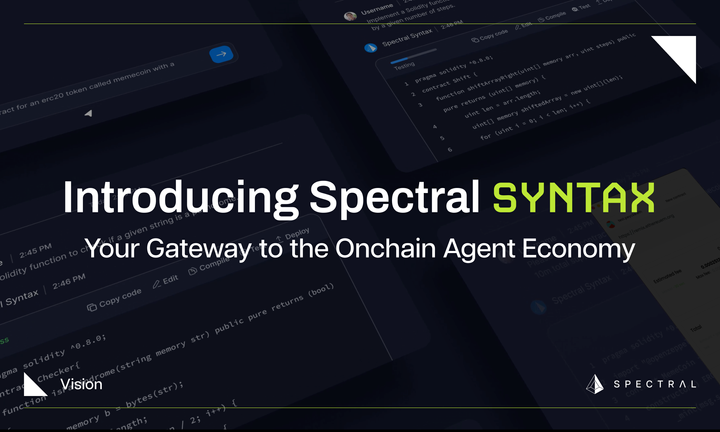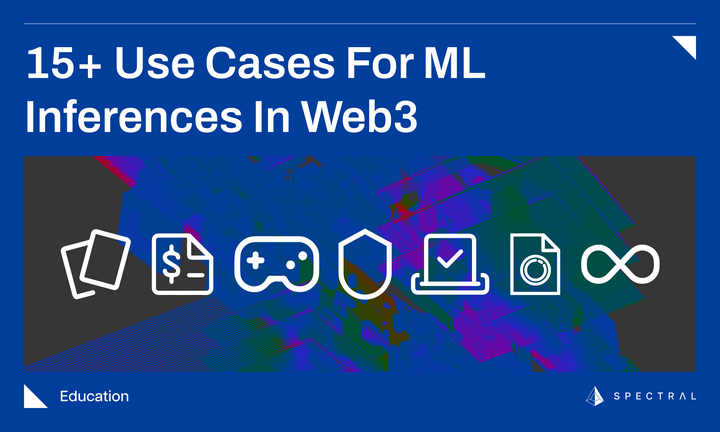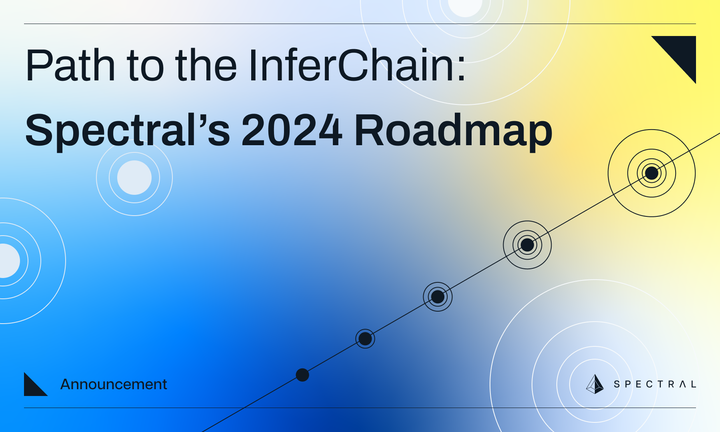Defining the Reputation Stack
Spectral dives deep into the emerging reputation and identity landscape and finds a much more welcoming ecosystem than the old Dark Forest paradigm.

Continuing our series on reputation and identity in DAOs and beyond… Here we discuss some of the emerging paradigms and key players involved in the reputation space.
A trusted layer is beginning to form in the DeFi ecosystem, one that reflects the much more fluid conception of identity in the post-web 2.0 internet. For most users, particularly younger users, there’s no longer a rigid or persistent web presence the way there was during the glory days of Facebook and Instagram, instead, there’s a constantly shifting bricolage of token-gated memberships, alternate identities, and preferred media.
Think of Howl’s Moving Castle, a cacophonic collection of objects rolling held together by an invisible force and rolling through a fantastic landscape—an idea that’s already been borrowed for Moving Castles, a gaming startup. Perhaps it will shake the old paradigm of life in web3, that it's a dark forest of MEV predators waiting to strike.
Creditworthiness assessment in the form of an on-chain MACRO Score and risk forecasting is a small fragment of the picture. Myriad other web3 startups are tackling identity and reputation, in different ways, enough that there’s an identifiable ecosystem.
Recent Developments Changing the Reputation Stack
- Decentralized Identifiers (DIDs) – Identifiers are unique, persistent, and portable qualities: in the United States this would include Social Security Numbers or a passport number. DIDs are decentralized meaning they don’t rely on a trusted third party for issuance or verification. On the Ethereum network, they rely on public keys, attestations, and decentralized data stores.
- Account Abstraction – A recent upgrade to Ethereum allows users to interact with the network using externally owned accounts (EOAs), which promises additional security and user experience flexibility.
- Risk forecasting – With more than four years of DeFi data on-chain and eight years of Ethereum transactions available, companies like Spectral Finance are able to use machine learning and other tools to analyze potential threats and opportunities from wallet signals.
- Bridgable identities – Identity should be able to span multiple chains as well as function in real life. Certain NFTs and wallets have been used for gating access to events, and cross-chain bridges can now be used to bridge certain NFTs between chains.
- Wallet messaging – Wallet messaging could allow alternate forms of identity challenges, such as demands for passwords or other information directly between peers.
- Artificial Intelligence – the explosion of artificially intelligent text has created a new use case for identity verification: the need for robust proof of humanity.
The State of the Stack
Off-chain, reputation, and identity are a form of intelligence gleaned from a personal network or a combination of public and private sources. Choosing a restaurant might take the form of a scan through the Michelin Guide, a perusal of Yelp’s concealed reviews, attestations from friends and family, and how it might fit with your carefully manicured Instagram aesthetic. On-chain, this is a more quantitative process.
On-chain identity has been a hot topic the last few months.
— drew (@wandzilak_drew) October 12, 2022
What does identity look like in Web3 and what infrastructure is needed to support that vision?
To try and answer those questions, I did a deep dive into the Web3 identity landscape 🧵👇 pic.twitter.com/qwKT9AoXKH
To most users, the treasure trove of public information available on the blockchain is completely opaque. Etherscan and its API are the most widely used blockchain information providers but what they provide is essentially raw material. The Graph and other blockchain infrastructure companies help digest this information flow by processing blockchain data.
Arkham Intelligence is working to change this. Using intuitive, smart visualization tools, even ordinary users can map relationships between wallets and dApps and protocols. They also offer an easy way to track an on-chain portfolio and its positions, view transactions on Ethereum and various L2s, and sort and filter transactions in a variety of ways. It’s a simple interface with powerful results: they’ve helped identify major news as it happened, including wealth transfers by Voyager and massive stablecoin burns during the recent USDC de-pegging.
Wallet applications like Zapper.xyz or Metamask's new portfolio site are also increasingly providing tools for wallet users to visualize their own wallets and those of other users. In combination with other publicly available information this can sometimes allow wallet deanonymization.
Spectral Finance approaches reputation and identity through a different lens. They have two primary products: their first product is the MACRO Score, an on-chain creditworthiness assessment that assesses how likely an individual wallet (or agglomeration of wallets) is to be liquidated. Their second product provides customized bundles of wallet signals, which can be anything from NFT trading data and near-real-time risk forecasting.
- On-chain Proof of Income
- Creditworthiness
- ETH Holdings
- Token and NFT holdings
- Transaction history
- Borrowing and Lending
- Visualizing Connections
Ultimately what Spectral, Arkham, and, on a slightly different scale, blockchain analytics firms like Chainalysis and TRM Labs provide are ways of visualizing and understanding relationships between wallets on the blockchain. Of course, the contents of the wallets are also important.
What Lies Within (Your Wallets)
Non-fungible tokens (NFTs) offer more than digital scarcity. Spectral, for example, uses a version of an NFT, the NFC as a financial reputation primitive which contains a MACRO Score representing a wallet or aggregation of wallets. NFCs can gate access to lending pools or form part of a composable debt instrument. Other protocols use tokens to represent proof of attendance, reward loyalty, blacklist bad actors, offer KYC, or myriad other uses.
One way to begin categorizing them is to divide them by their essential qualities. What are the basic parameters of the smart contract: is the token transferable between wallets? Can it be destroyed?
Non-Transferable
Removing transferability from a reputation and identity token offers developers tremendous flexibility. Credentials become more meaningful if they can’t simply be sold to someone else. Club membership can become exclusive, or governance tokens can be kept within a tight circle.
Soulbound Tokens (SBTs) are perhaps the most famous example of nontransferrable tokens, thanks to Vitalik Buterin et al’s paper defining them as the building block of a new, decentralized society. These are tokens that are permanently bound to a specific wallet or individual. They’re intended to prioritize reputation over token ownership, addressing some of the complaints about the limitations of cryptoeconomics on governance.
Use cases for SBTs include:
- Academic credentials
- Governance tokens
- Health Records
- Historical Records
- Job credentials
- Trophies
- Blacklists
- Proof of Attendance or Participation (POAPS)/OATs
Attestations are non-transferable tokens that aren’t intended to be permanent or are revokable, and have presented as an alternative to SBTs. The argument is that attestations more closely resemble the way that people actually think of reputation or identity: as something ephemeral and mutable.
Use cases include:
- Authentication
- Rentals (gating access to a vehicle for example)
- Coupons
- Whitelists
- Vouches (such as a letter of introduction or recommendation)
- Certifications that must be renewed (like a drivers license)
- Visas
- Proof of Humanity
- Proof of Life
Transferable
Traditional NFTs also have their place in the reputation and identity stack. Profile Pictures (PFPs), for example, denote membership and open the communities around a project such as Bored Ape Yacht Club, offer a potential investment opportunity, and act as a Veblen Good. Transferability can also allow a badge or NFC, for example, to be used in a composable debt instrument for example. NFTs can also replace transferrable documentation such as real estate titles, or even offer fractional ownership of goods or income streams.
Use cases include:
- PFPs
- Artwork (1/1s)
- Prints (series)
- Real estate titles
- Fractional ownership
- Gating community access
- Income streams
Burnability
A bit like the difference between a temporary or permanent tattoo: whether or not an NFT can be destroyed impacts its potential use cases. A permanent black mark, for example, has much more serious consequences than one that can be disposed of by its owner. Other possible uses: time-locked burnability — a penalty or boon that can expire, for example, or potentially making a temporary offer.
Building the Future of Finance with Spectral
The pseudonymous nature of the decentralized nature of peer-to-peer transactions limits their use in financial markets, particularly as governments force ever more know-your-customer (KYC) and anti-money laundering (AML) restrictions on payment gateways and processors. Web3 would do well to seize the initiative and create a decentralized identifier that is robust, verifiable, persistent and transparent, composable, equitable, and completely under a user’s control.
Would you like to build with Spectral’s financial primitives and wallet signals? Check out our new developer documentation.




